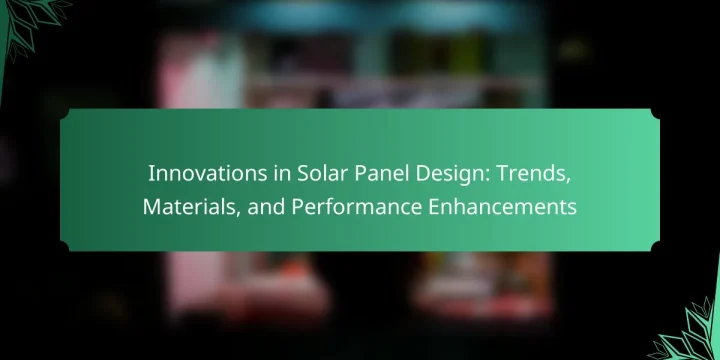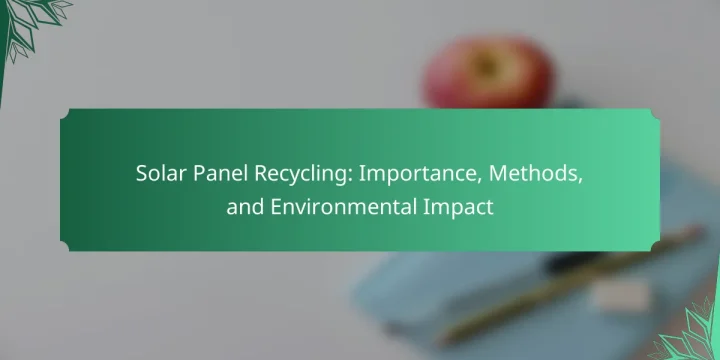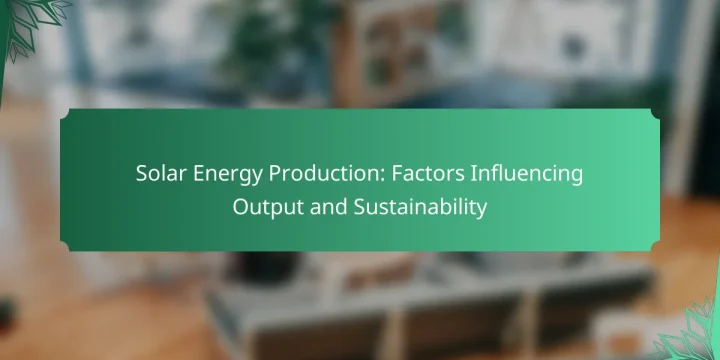
What are the latest innovations in solar panel design? The latest innovations in solar panel design include bifacial solar panels and transparent solar cells. Bifacial panels capture sunlight from both sides, increasing energy production by up to 30%. Transparent solar cells can be integrated into windows, allowing buildings to generate energy while maintaining aesthetics. Another innovation is the use of perovskite materials, which can enhance efficiency and lower production costs. Researchers have achieved efficiencies over 25% with perovskite-silicon tandem cells. Additionally, solar panels with integrated energy storage systems enable better energy management. These advancements reflect ongoing efforts to improve efficiency and versatility in solar technology. How are technological advancements shaping solar panel design? Technological advancements are significantly shaping solar panel design by improving efficiency and reducing costs. Innovations such as…


